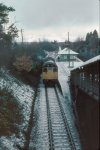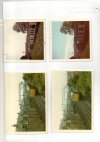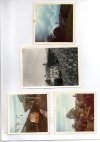Perhaps one of the most interesting historic aspects would be the diversion of the line to Helensburgh Central from it's original route through what is now Colgrain to run via the current Craigendoran station at the pier which the NB constructed for its steamers, with a dedicated Pier platform (P1) which continued in use by boat rains until the early 1970s, having been denied access to Helensburgh Pier through the town centre. Looking at it today it is probably hard for people to realise Craigendoran used to have five platforms. Fuel for the steamers (latterly a mix of steamers and motor vessels) was delivered in rail tank wagons onto the pier and it was only very late on when fuel deliveries switched to road - the road tankers were not allowed on the pier and a pipe was laid from the roadway onto the pier.
Whilst I don't recall the C15 push pull operation, I do recall the railbus for the Arrochar locals and somewhere I have an excess ticket issued on the railbus from Rhu. I believe the local service ceased in 1963. It was a mystery to me how it was crewed, as the service started and finished the day in Arrochar, and this was well before the days when trains would run ECS to start the service, were there drivers and guards in Arrochar, or was it lodging turn for Helensburgh or Eastfield crews?
More memories to come, including the photo I mentioned in the Cal Sleeper thread, almost identical to that posted by
@McRhu but without the wintry backdrop but in the meantime some tasters from the Helensburgh Central line including one taken from my bedroom window in East King St and others taken over the garden hedge.





